Transforming the online customer experience from insight to conversion.
HomeServe
As part of a wider digital transformation programme of work, we aimed to transform HomeServes digital assets to become a best in class customer service business, increase user purchase conversion rates and take a customer centred approach that creates a better purchase experience with principles that can be extended across HomeServe UK’s digital assets.
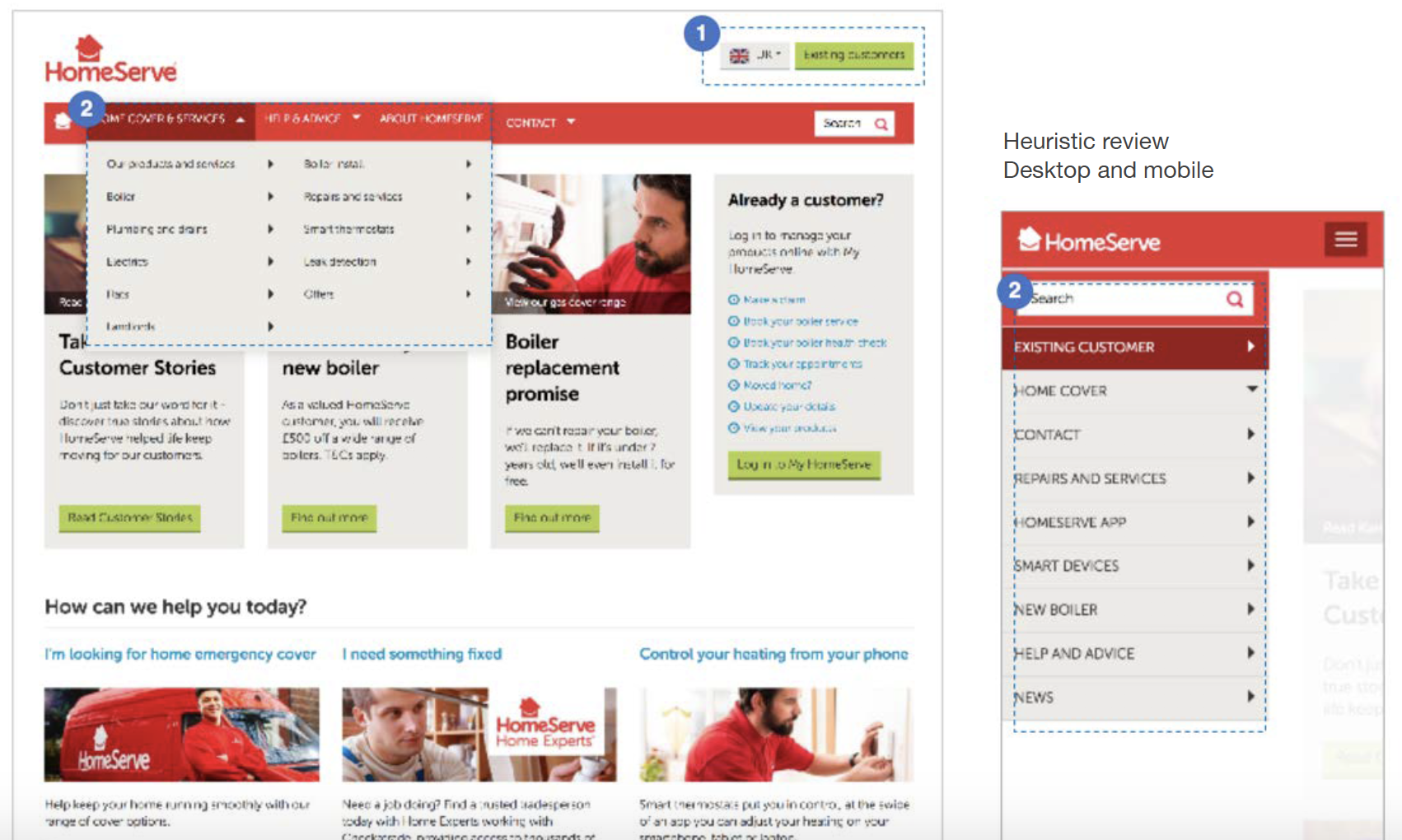
Observations
HomeServe’s current digital experience is outdated and doesn’t sufficiently deliver a customer centred experience.
HomeServe.com is currently focussed on promotions, diluting insurance products and service offerings.
Approach
We focused our approach on our initial 3 key users journeys which would be extended to 6 total user journeys:
- Product purchase journey
- Product claims journey
- Book a boiler service / health check journey
Identify 2 tactical improvements that could be made to drive better conversion. From these initial improvements, redesign x3 customer journeys and develop a working prototype that can be used for user testing sessions to validate designs. This design was then delivered as templates and style guide for efficient implementation by HomeServe development teams.

Strategic workshops
Customer journey workshop
Compliance workshop
Customer interviews
Customer journey map
Information architecture
Card sorting workshops
Conversion rate analysis
Data driven design
Concept prototyping
Wireframes
Visual design
Click through prototype
User testing sessions
Qualitative testing
Feedback analysis
Competitor analysis / research / customer journey
We conducted a review of existing research and performed some gap analysis and competitor analysis. After extracted key findings and differentiators we grouped into a number of themes and opportunities for HomeServe to explore in the future.
Key themes uncovered:
Building trust
HomeServe could improve on building customer trust in a number of areas.
Switching providers
This is opportunity to encourage customers to switch from one provider to another.
Quick cover in an emergency
Allowing customers to get cover quickly in an emergency will help deliver better conversions.
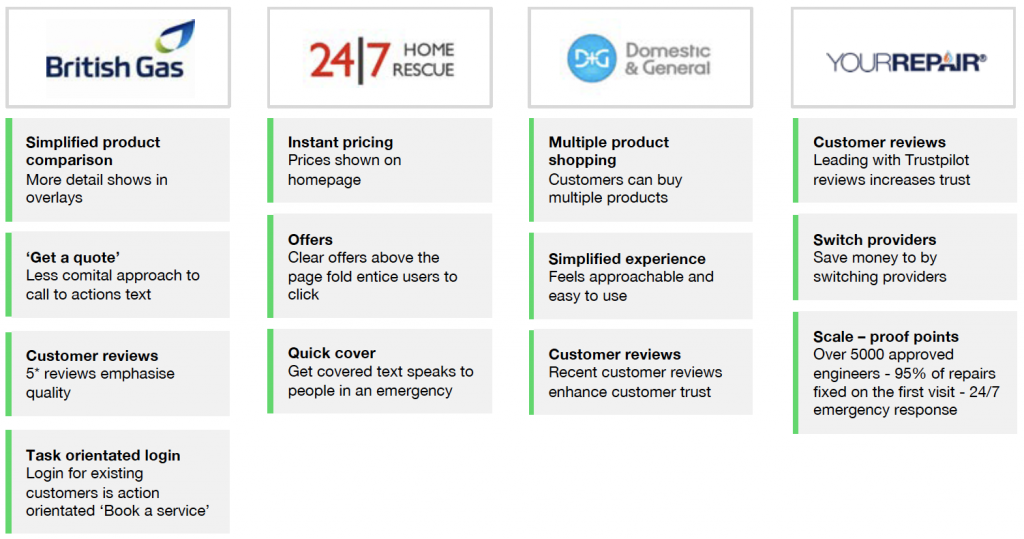

Customer journey blueprint
We further explored a service design blue print to better understand their customer journeys and customer life cycle to better make decisions and understand dependancies.

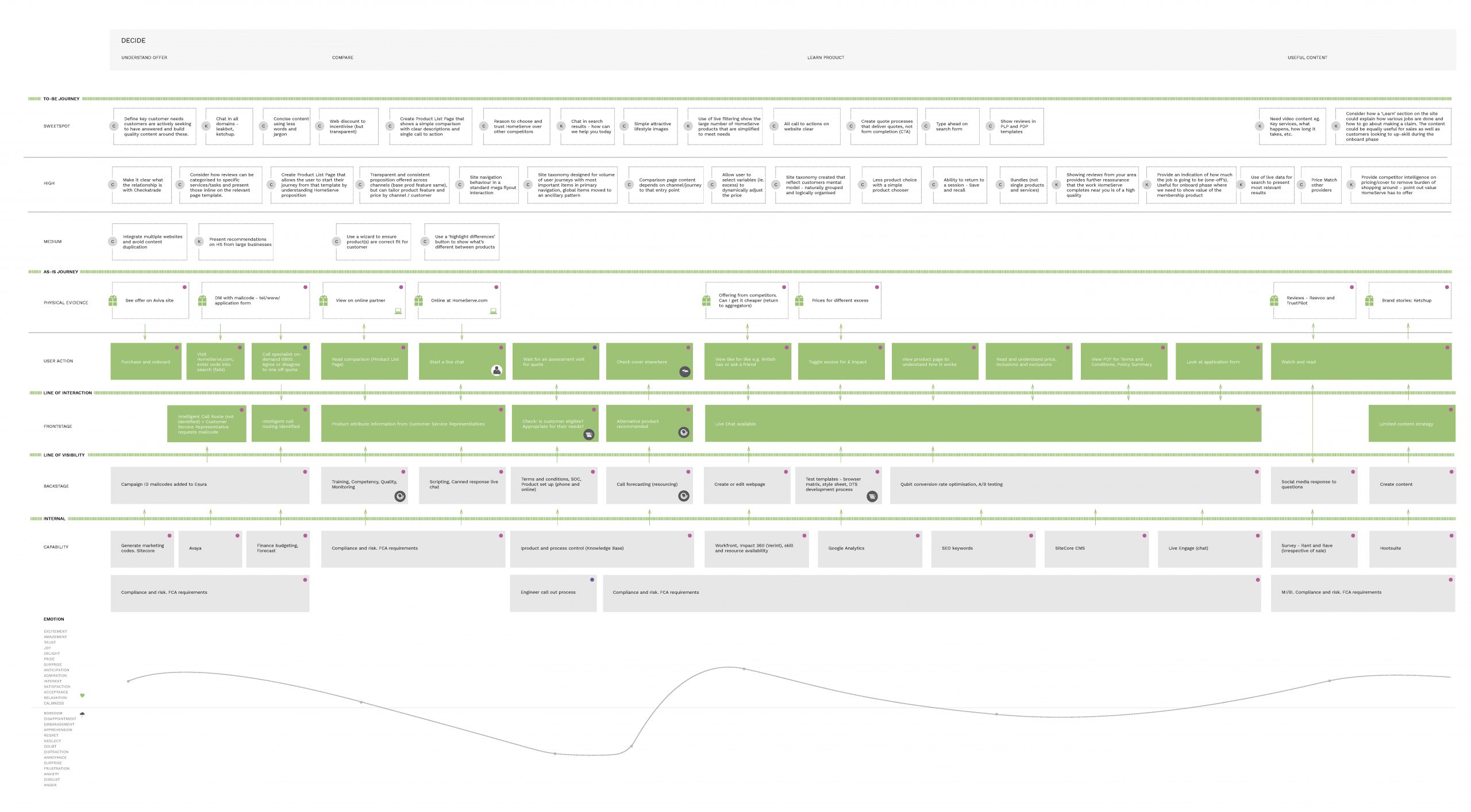
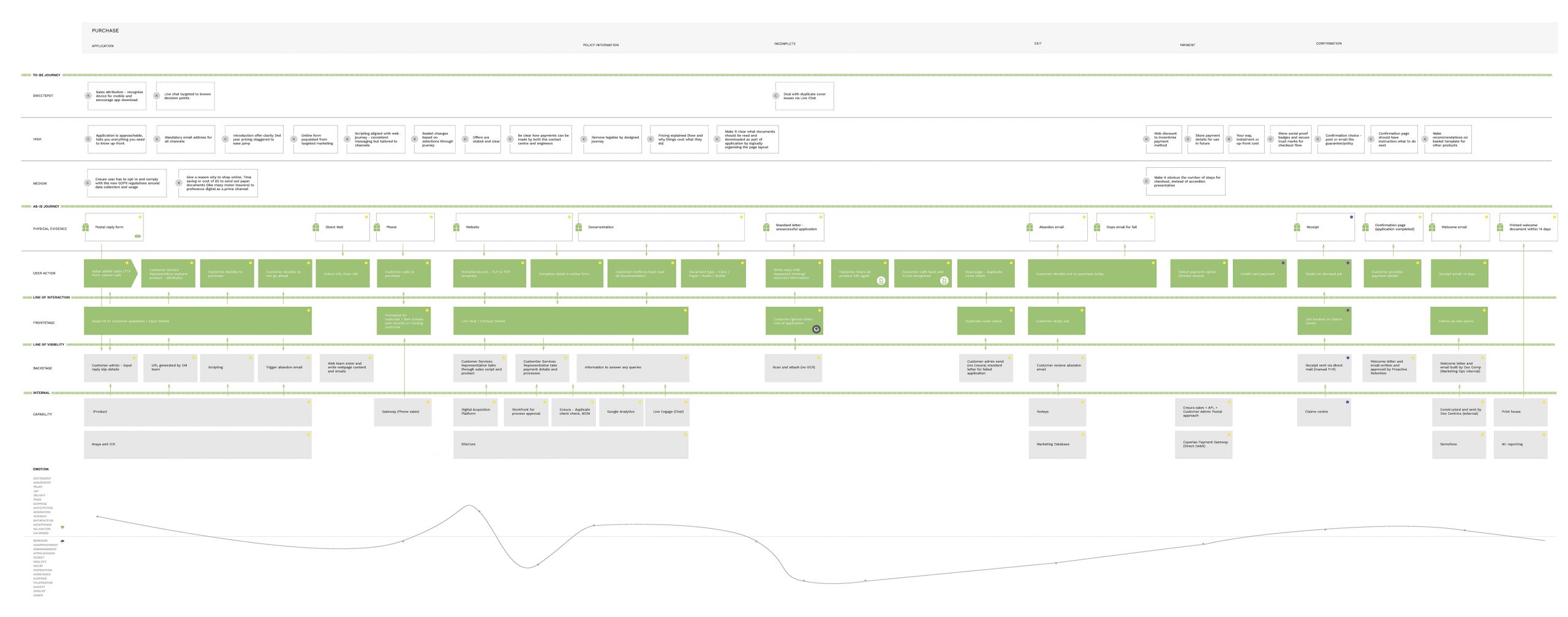
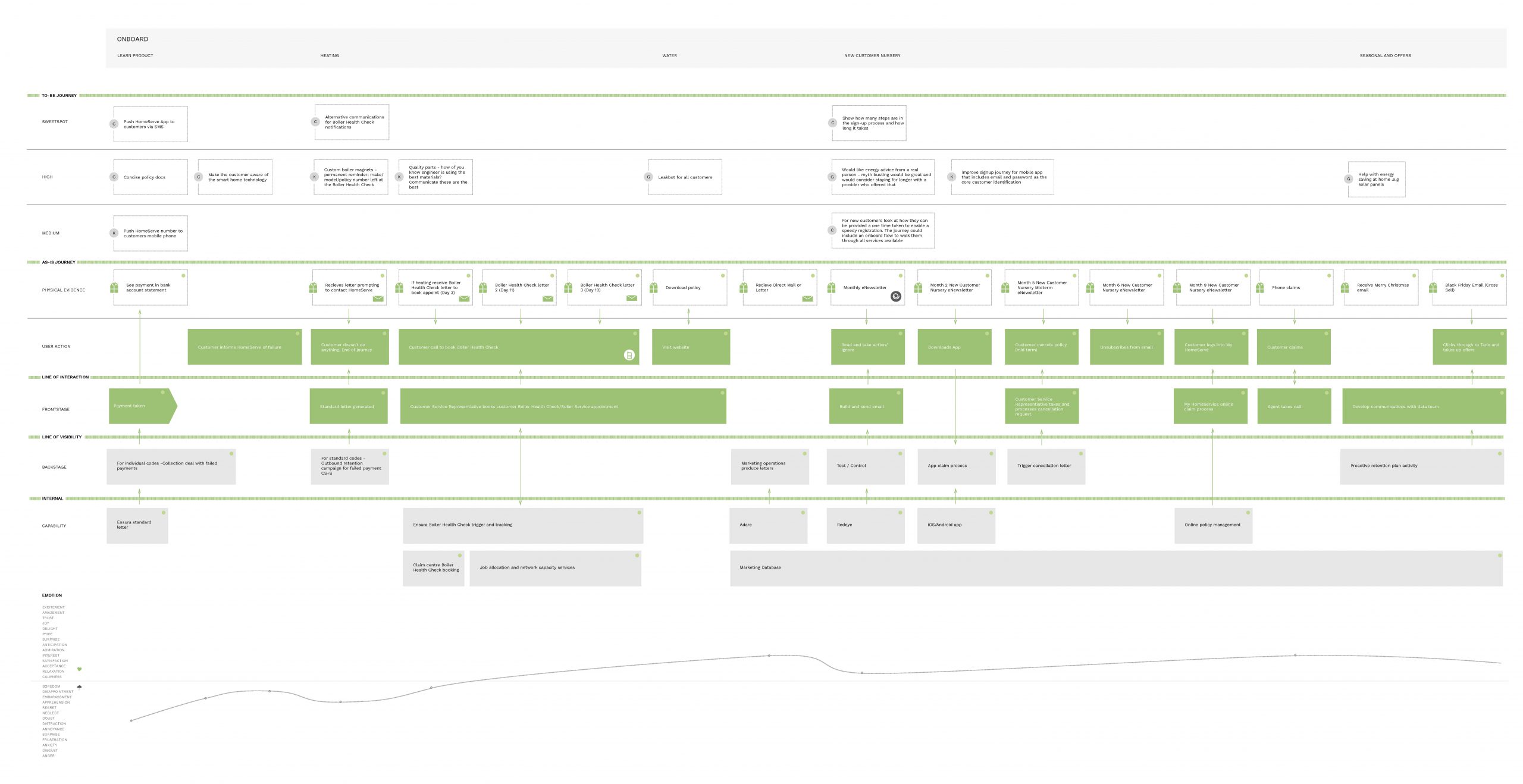


Current experience - Heuristic review
To gain an understanding of the current experience we documented the current user journeys and conducted a heuristic review to identify 2 tactical improvements that can be made to drive immediate impact. We also took a closer look at the data to benchmark the current conversion rates from page to page and find areas of focus to improve the experience.
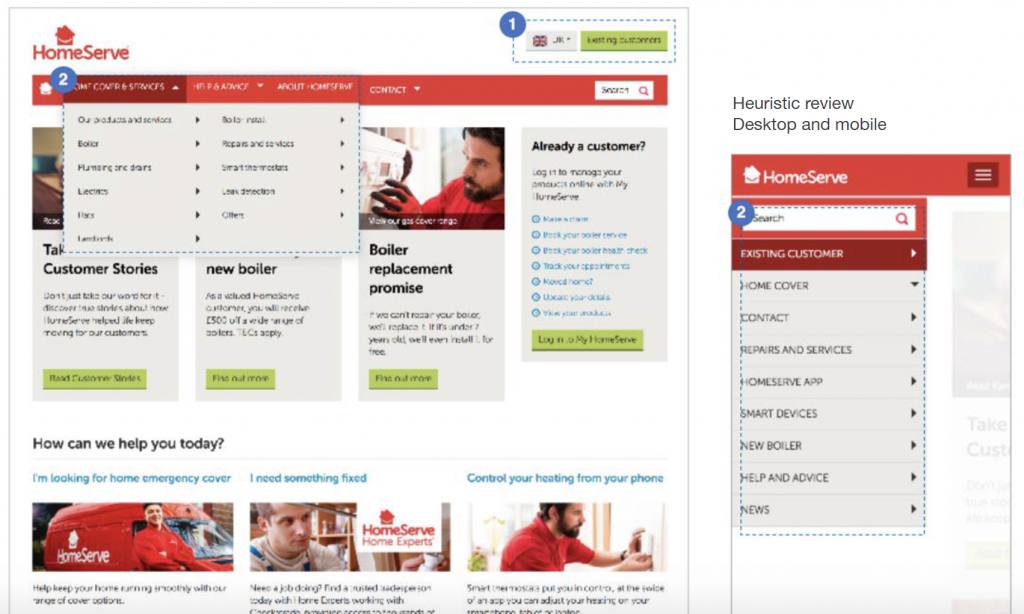
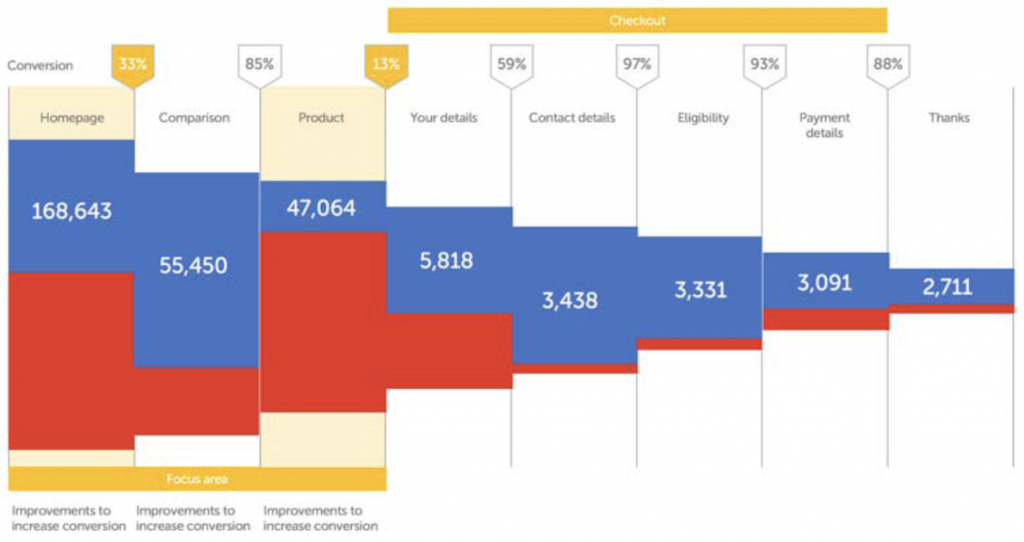
Information architecture
Card sorting workshops helped to uncover the structure of the business and helped identify what customers need. Workshop groups were asked to discuss and identify ‘top tasks’ from a customer perspective. We worked and observed key stakeholders to define HomeServes information architecture from a customers perspective.
Workshops were held with 3 groups and each session used the following structure:
- Top tasks identification
- Closed Card Sorting
- Discussion

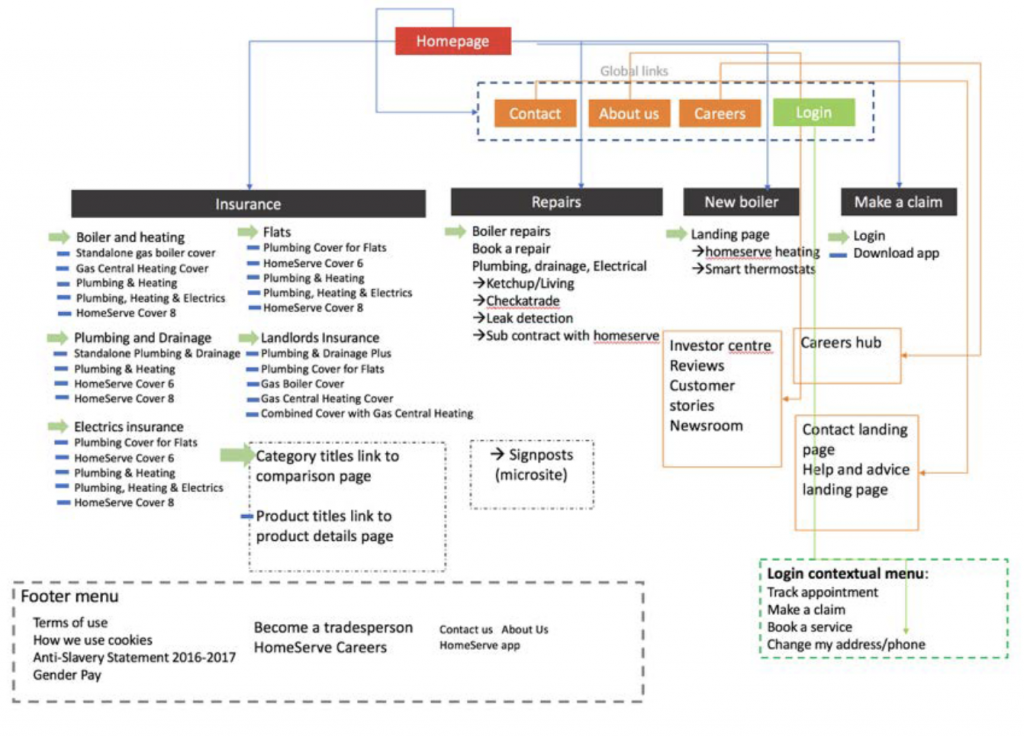
Based on IA workshop analysing user needs and business needs, we recommended a mega menu navigation that would provide a robust flexible alternative to the current dropdown menu system.
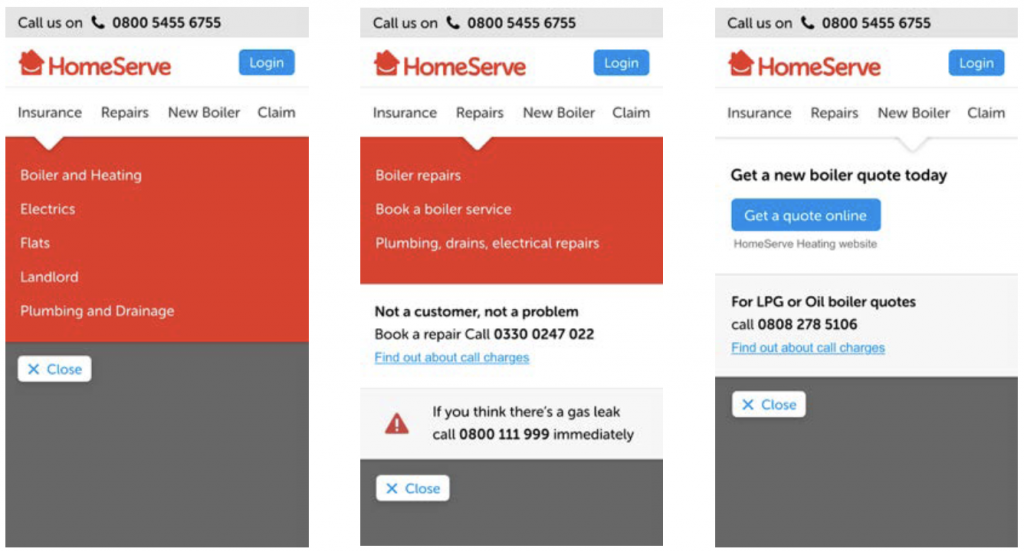

User testing sessions
This phase of research sought to uncover any usability issues with the HomeServe prototype.
- Understand whether people would be able to complete key tasks using the prototype
- Identify any challenges in the navigation mechanisms of the website
- Test how well items of content would be read and understood
- Ultimately increase conversion
The findings were recorded into a list and prioritised and the high priority feedback was included into the visual designs. The remaining items were recorded for backlog improvements.

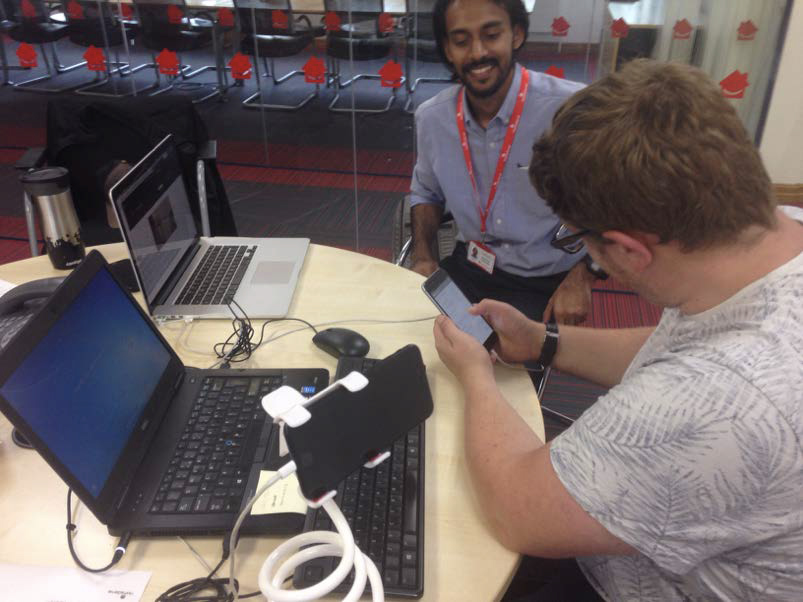
Responsive website design
A customer centric approach that’s a simplified easy to use digital experience that drives a better purchase experience for the customer a drive better ROI for HomeServe.
We delivered a number of optimised customer journeys focusing primarily on conversion driven from earlier research and insights.
Click through demo
https://kv5zmz.axshare.com/home.html

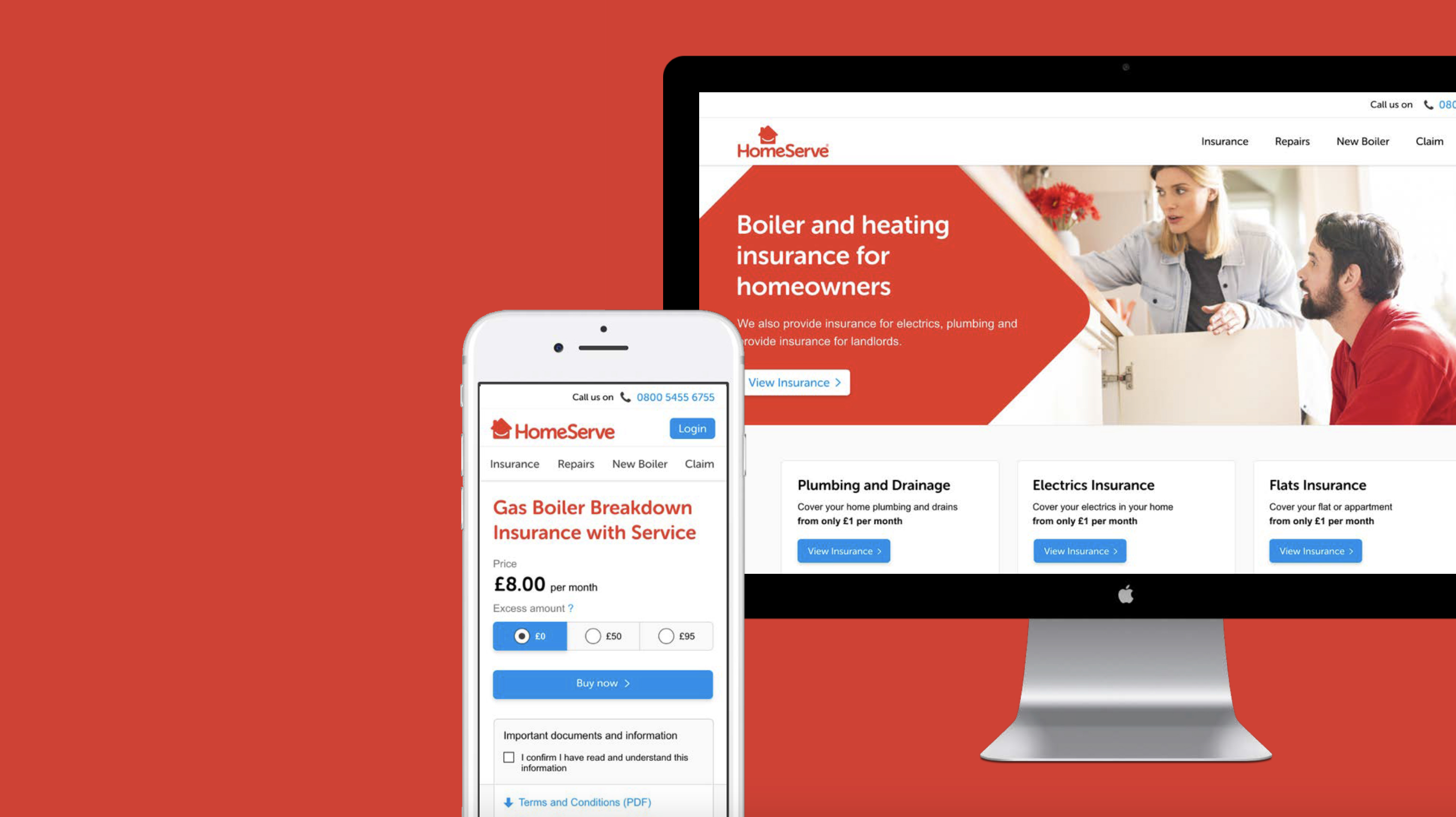


Future interfaces

Facebook Messenger Chatbot
There are a lot of benefits related to having a chatbot. With new advancements like NLP and Machine Learning, which makes the bot more intelligent and perform more tasks.
• 24/7 accessible and can funnel leads through to different channels
• Conversational UI makes handling customers problems more dynamic
• Automation of repetitive work helps to reduce the work load and save costs to the business and time at call centres
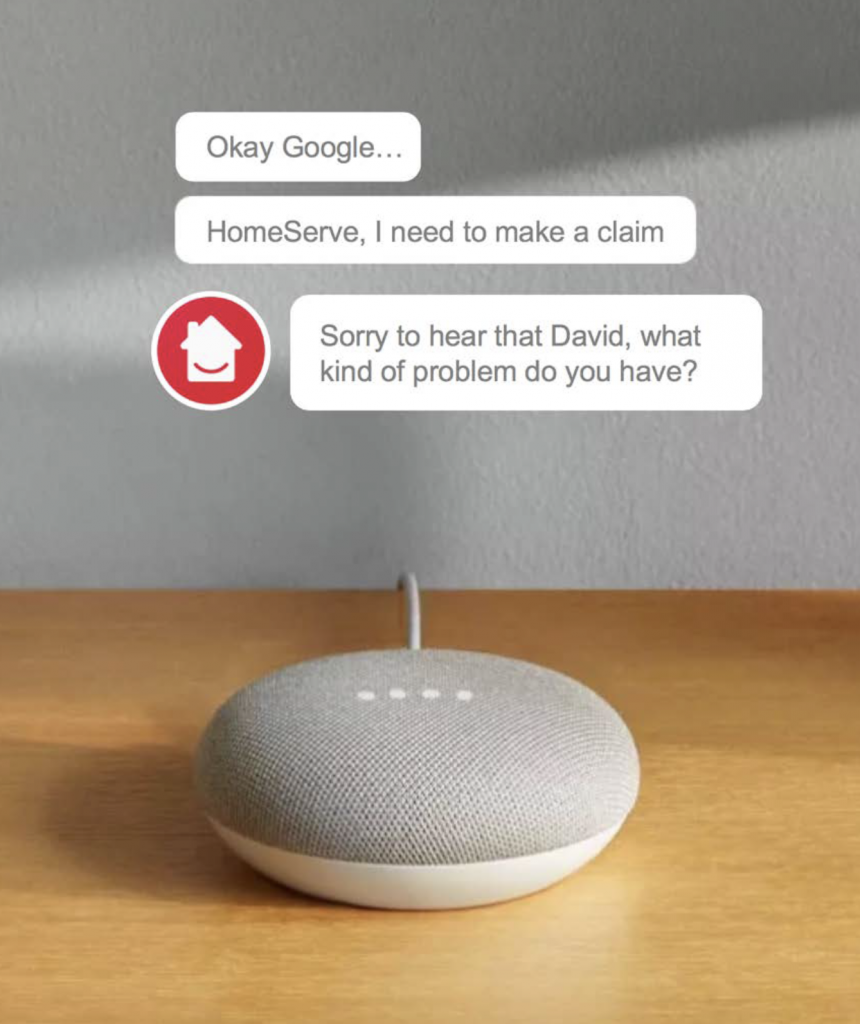
Google Home – Voice
Voice provides a natural way to interact and it’s another new interface that we must design for and deliver on to keep up with technology and expectations.
An interface that doesn’t force users to learn and recall specific commands or methods of interaction creates less friction.